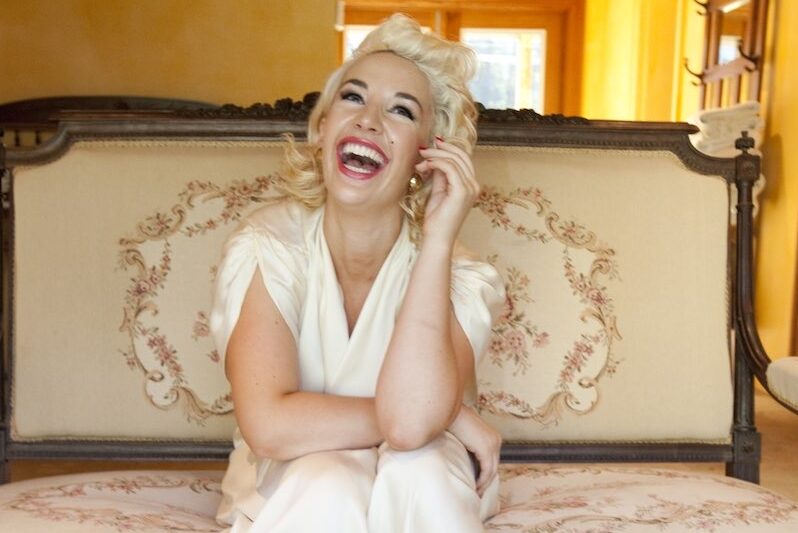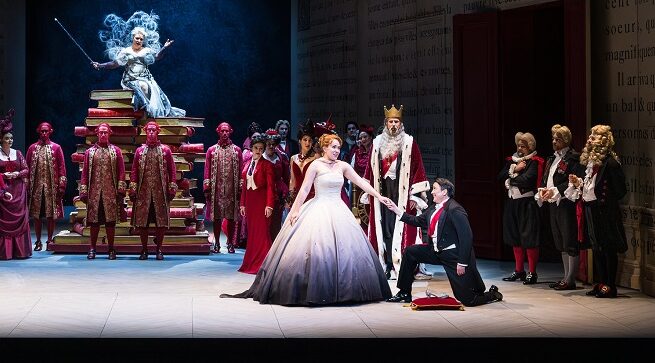
Some Like it Marilyn is Canberra actor-producer Lexi Sekuless’ stage show about Marilyn Monroe’s life on the screen, and if the title sounds familiar, it is.
That’s because Sekuless, well before she left to study at London’s Central School of Speech and Drama, created a cabaret show around the famous screen legend for Teatro Vivaldi’s restaurant at the ANU.
That was a one-woman show and, as Sekuless explains: “I’ve been doing it in different versions for quite a while now and this next one is its fourth iteration… it started as a one-person show, then in 2017 and 2018… I did it at Old Parliament House because Vivaldi’s was gone.”
Our reviewer at the time praised Sekuless’s “eerie similarity” to Monroe.
“We’re doing it as a four-person theatrical version, not a cabaret, with quite a few new additions to the content,” she says.
Sekuless is joined on stage by Helen Macfarlane, Mark Lee and Timmy Sekuless as a cavalcade of characters in the Marilyn story – Jane Russell, Tony Curtis, Billy Wilder, husbands Joe DiMaggio and Arthur Miller and lover Yves Montand.
The earlier team of choreographer Annette Sharpe and musical director Leisa Keen will be joined by lighting, set and costume designers, Zeke Chalmers, Sam Thomas and Tania Jobson to create a seamless whole that they’ll all direct.
So, what is it with Marilyn and Sekuless?
“I suppose at first I was interested in the same thing as everyone was, which usually meant they didn’t know much – they thought she was some kind of Playboy bunny… My best friend was a Marilyn fan and she criticised me for not doing enough research in my first version, so that pushed me into finding out much more about her.”
Sekuless realised in her research that everybody tried to “own” Marilyn, something she believes happens with famous icons after they die.
“Every book presents a different side of the story – the Kennedys were there or they weren’t there and so on. I thought, I don’t know what the truth is, so I looked at her through her work.”

The play is “not a biographic, but a film-o-graphic look,” so it’s not focusing on all the personal scandals in Monroe’s candle-in-the-wind life.
This way, she figures, she’s on secure ground.
“We can still see those films everywhere, so the idea of gossip is not part of this show.
“More and more I realise how unique her form of onscreen vulnerability was. When I was studying at drama school in the UK that really landed on me when my teacher tried to teach me the same kind of vulnerability.”
The art of acting, she speculates, is not like music, where you can learn the techniques and you’ll be right.
“The acting craft is not black-and-white and there was something about the way she worked that I knew I had to explore,” says Sekuless.
There was criticism aplenty of Monroe’s work ethic and temperament, not least from director Billy Wilder, who often complained of how difficult she could be, while admitting that she “owned” the screen.
And after working on the 1957 movie The Prince and The Showgirl with Laurence Olivier, where they famously clashed over the question of acting styles, he would say that she stole the movie from him.
No dumb blonde, Monroe had studied method acting with Lee Strasberg, who also taught Marlon Brando, Paul Newman and Al Pacino, and retained an interest in serious acting throughout her career.
“Marilyn’s work was incredibly good,” Sekuless says.
Audiences can expect excursions into movies such as Some Like it Hot, How to Marry a Millionaire, Diamonds are a Girl’s Best Friend and her last film, The Misfits. There’s even a bit from the self-justifying Arthur Miller play After the Fall, where a character very like Marilyn appears on stage.
So how much of the career do they cover? When I catch up with Sekuless she’s still debating whether to go as far back as 1948, when Monroe, no longer Norma Jeane Mortenson, appeared as a chorus girl in Ladies of the Chorus.
That was before her breakthrough – by the mid-1950s she was an established star.
It was not to be for long. Monroe died of a barbiturate overdose in 1962 aged 36 and Strasberg gave the eulogy at her funeral, saying: “She had a luminous quality. A combination of wistfulness, radiance and yearning that set her apart and made everyone wish to be part of it.”
Some Like It Marilyn, Mill Theatre, Fyshwick, August 7-24.
Who can be trusted?
In a world of spin and confusion, there’s never been a more important time to support independent journalism in Canberra.
If you trust our work online and want to enforce the power of independent voices, I invite you to make a small contribution.
Every dollar of support is invested back into our journalism to help keep citynews.com.au strong and free.
Thank you,
Ian Meikle, editor




Leave a Reply